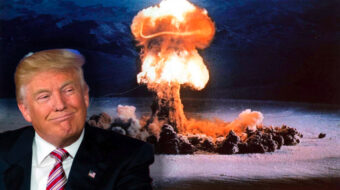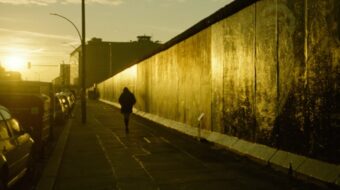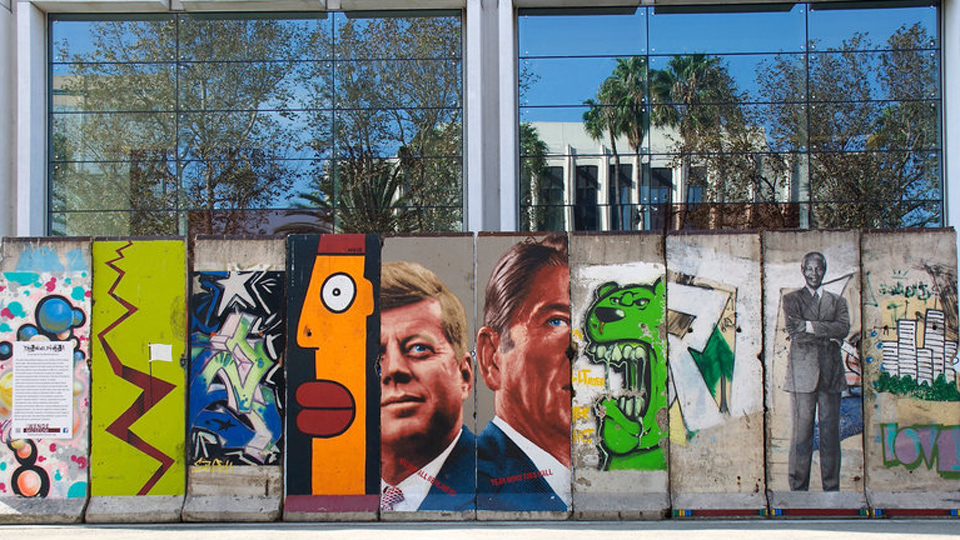
CULVER CITY, Calif. — At least a dozen workers scurried around us with dollies and scaffolds, wiring and brooms, in their rush to prepare the Wende Museum for the Nov. 18-19 opening weekend celebration of its new space on the western end of this city’s downtown area.
Founded in 2002 and housed for the past 12 years in an out-of-the-way office park elsewhere in Culver City, where only a small percentage of its collections could be displayed, the Wende Museum has just moved to a new site, the iconic former National Guard Armory Building in Culver City.
The Wende Museum was established by Justinian Jampol, a native of Los Angeles and scholar of modern European history, with a mission to preserve the art, culture, and history from the Soviet Bloc countries (generally the Soviet Union and the countries of the Warsaw Pact), inspire a broad understanding of the period (1945–1991), and explore its enduring legacy.
The German word Wende means “transformation” or “change” and refers to the transition out of the socialist model into Western European capitalism. All of the Soviet Bloc countries went through a similar experience in the years 1989-91. “Today marks our own Wende,” Jampol said at a “sneak peek” for the press on November 17th. This building, originally designed for war, has been “transformed into a place for peace.”
As a graduate student a couple of decades ago, Jampol encountered the material culture and artifacts left behind by the former regimes, and he realized, “We could actually preserve these things while we had a chance. They tell us so much about people.”
At first, Jampol recalled, he had “a vision but not a plan.” That’s when the idea of a museum began to acquire a board and officers, a commitment to fundraising, a physical space and paid staff.
Jampol introduced “the mastermind behind this exhibit,” chief curator Joes Segal, who first visited the museum eight years ago as a professor of history at the University of Utrecht in the Netherlands. So taken was he by the potential for this collection that he took a one-year sabbatical from Utrecht to act as a guest curator. He then gave up his position in Utrecht and has been working at the Wende ever since.
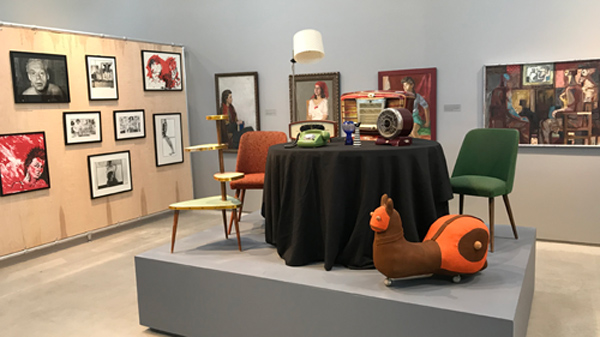
The one-acre campus is designed in a spirit of transparency and open access, lifting the veil (dare I say iron curtain?) of mystery on Cold War secrets. The vast collection includes more than 100,000 pieces of art and artifacts from Cold War-era Eastern Europe and the Soviet Union. Scholars have already availed themselves of its cornucopia of resources and books based on the museum’s holdings have appeared. The general public is invited to visit and contribute their own insight into the lessons of this era for new generations.
Curatorial workrooms will be visible to visitors so that people can see what is being accessioned, how it is treated, catalogued and displayed. Many items, such as ceremonial plates, banners, or articles of clothing, were produced in small quantities; in some cases, the Wende may have the only surviving examples. Paintings and sculptures were, of course, unique. At the same time, there is much repetition as well: Many two- and three-dimensional depictions of Lenin and other socialist leaders, for example.
The new location will offer expanded visiting hours, free admission, a full program of exhibitions, lectures and events, an outdoor sculpture garden, and state-of-the-art open storage of the Peter Baldwin and Lisbet Rausing Collection. The library contains an estimated 25,000 volumes, including the personal library of former East German leader Erich Honecker. Donations of items from the period are invited (full disclosure: I have given the Wende a number of objects collected in my own travels in Eastern Europe).
The new space features three distinct exhibitions:
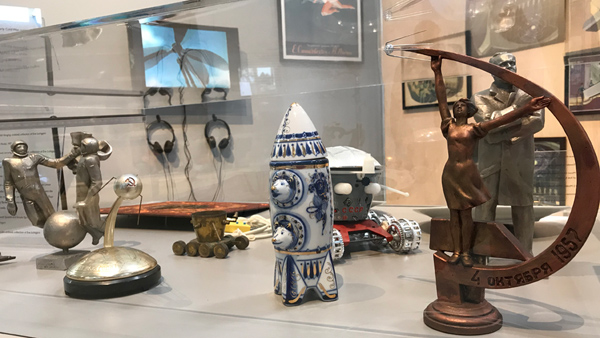
Political power relations, economic structures, and cultural ideas impact the way we experience, envision, and structure our environment. Cold War Spaces explores the spatial characteristics of Cold War-era Eastern Europe and the Soviet Union in ten sections: public space; private space; work space; border space; secret space; ideological space; alternative space; outer space; shared space; and changing space. The items in these sections are mostly drawn from the Wende’s permanent collection.
The Russians is a photography exhibition on loan from New York-based Nathan Farb, based on a trip he took in 1977 to Novosibirsk as a host of the American exhibition Photography USA, part of a cultural exchange program under President Carter’s administration. While there he used a Polaroid camera to take pictures of people attending the display, preserving the negatives for later use. Many of these images look like people we might know, although the smiling lady showing off her rack of stainless steel teeth would certainly not be common in the USA.
The third exhibition on display, Vessel of Change, is a video installation by artist and filmmaker Bill Ferehawk and multimedia designer David Hartwell. The video playfully reinterprets the Malta Summit of December 1989 between Presidents George H.W. Bush and Mikhail Gorbachev, symbolically sealing the end of the Cold War.
Future exhibitions and programs will focus on utopian visions; the art and culture of Cold War Hungary; Soviet hippie culture; psychological landscapes of the Cold War; the Cold War as it played out on the stages of Soviet and American ballet; imaginings of what a monument to Cold War victory might look like; and the television revolution under socialism.
The Wende Museum of the Cold War is located at 10808 Culver Blvd., Culver City, which is an incorporated city within Los Angeles County, about eight miles west of downtown L.A. Visitors are invited to explore the new campus facilities and tour the inaugural exhibitions.
Although it was not ready for viewing at the “sneak peek,” there will be a gift shop at the Wende, which may from time to time offer some of the duplicate objects in the collection for sale.
Formal visitor hours begin Friday, Nov. 24th. Monday and Tuesday, the museum is closed. Wednesday and Thursday it is open for school tours only; for more info, contact tours@wendemuseum.org. Friday, the Wende is open to the public 10 am-9 pm; Saturday and Sunday, open to the public 10 am-5 pm. The museum is closed on Thanksgiving Day, Christmas Eve, Christmas Day, New Year’s Eve and New Year’s Day.
For further information, go to the Wende website here.




